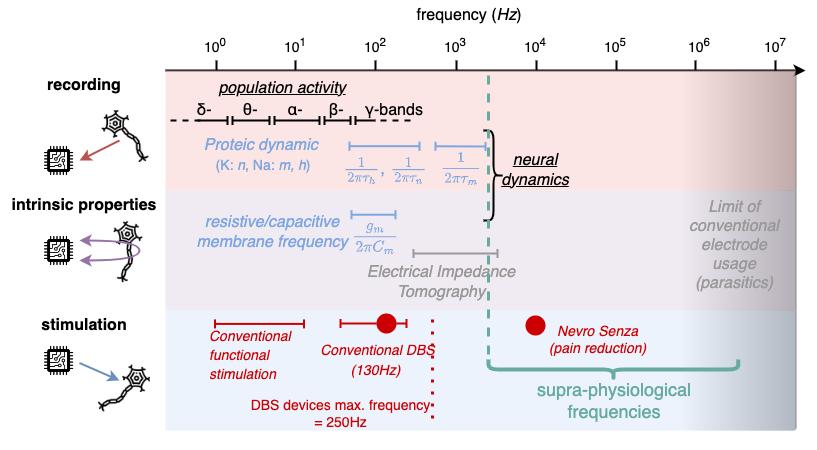Research - My Focus
Recent progress in electronics opened the way to design therapeutic activ devices to improve the quality of life for patients suffering from a large panel of disabilities (motor for instance) or deseases (Parkinson’s Desease, Huttington’s Desease or Epilepsy…) by embedding the possibility of stimulating or helping medical diagnostics. However, such devices still suffer from technological limitations: stimulation is often stereotypical and induces non biorelist reactions, tissue activity or intrinsic properties is in various contexts difficult to corelate to a biological or physiological state.
My research focues on modeling and design of bio-electronic interfaces for experimental biology and therapeutic devices. More specifically, I am widely interested in understanding bio-electronic interactions and design computational models capable of helping to develop non-conventional circuits and systems for healthcare purposes. As illustated in the figure below, the conventional bandwidth of bio-electronic phenomena is contained in the Hz to kHz (large groups of cells having the lowest frequency, and cells and their transmembrane proteins having a dynamic that can reach up to the kHz). The general hypothesis is that electrical systems interacting with biology, either for stimulation recording/measurement, work also in this bandwidth.

Interestingly, the vast majority of bio-electronic interfaces rely on electrodes, which can be used up to the MHz range, only limited by purely electrical-engineering related parasitics (mostly capacitive cross-coupling and inductive nature of connecting wires). My research are mostly centered on exploiting the unused kHz to MHz band (or supra-physiological frequencies) for novel approaches, and combinations of conventional and supraphysiological frequencies, mostly for electrical stimulation and intrinsic bioelectrical tissues properties measurements.